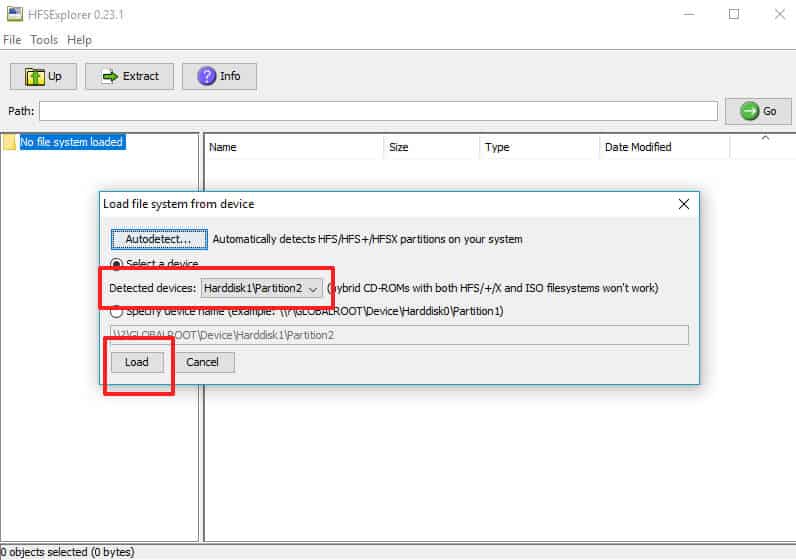

- #Hfs file system wont detect device how to
- #Hfs file system wont detect device free
- #Hfs file system wont detect device windows
Here is one more improvement: APFS uses the “copy-on-write” principle to guarantee that all changes and entries to the journal will get synchronized all the time, and if the operating system crashes unexpectedly or there is a power-off, nothing at all is going to happen to the data on your disks. In APFS, the accuracy of timestamps has been improved considerably, and now it supports time stamping accurate to the nanosecond, While HFS+ was limited to a second timestamp resolution.
#Hfs file system wont detect device how to
How to Recover a MacOS Extended Drive 🍏 New timestampsĮnhanced features for working with removable devices let users transfer and read information much faster which reduces the number of possible write errors. 🔝 Top Tools to Recover Data from HFS+ Drives. There is only one exception – volumes have to be located inside one container. This way, any space which is unused can be assigned to any volume where it is needed.
#Hfs file system wont detect device free
Under certain conditions, this size can be modified without losing data, but too often, such conditions do not apply to the size you’d like to enlarge.ĪPFS removes most of those size limitations and lets volumes to make use of any free space available on the disk. In comparison to its predecessor, HFS+, if you format the disk to have one or several volumes, the new file system assigns a fixed size to every volume, and this size is determined at the time of creation. This container holds one or several partitions (volumes), each of them having its own structure (the space of names, and a set of files and directories) for storing data, links to file and folder locations, and the root directory containing the data. Here is how the file system is designed: the operating system creates a container on the hard disk. For example, if a volume has insufficient space to accommodate a file, it will use some space from another volume automatically. With the Space Sharing feature, all volumes of a disk can share their free space. Any files can be protected with one or several keys. In addition to the generally faster and more stable operation, users will gain access to secure disk encryption tools.

In simple words, APFS can store a lot more files than its predecessor: about 9 quintillion files in every volume, which must be more than enough for a dozen of years. Unlike HFS+ based on 32-bit architecture, APFS uses 64-bit structure. Now the operating system can use snapshots to make backups more efficient, which lets Time Machine work faster.

Thanks to using snapshots (point-in-time, read-only instances of the file system) backup operations take much less time.
#Hfs file system wont detect device windows
🔝 Top Tools to Recover Data from APFS drives or how to recover Apple MacOs disk in Windows 🍏 Snapshots This simple algorithm helps to save disk space considerably. If there are any changes made to the clone, only changed data is written to disk, while the rest of the file is based on its original version. Clones are created but they take as much space as required for one file, instead of the two. One more advantage is quick copying while saving disk space. Now applications can open faster and the overall system response time has been reduced. Thanks to the new functions such as cloning (copying a file or directory instantly, which doesn’t require additional disk space to store data) and compression (which helps to save disk space and increase write speed), the overall system performance has improved.


 0 kommentar(er)
0 kommentar(er)
